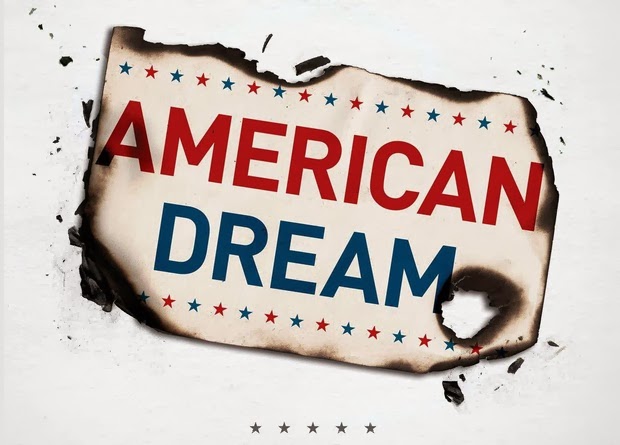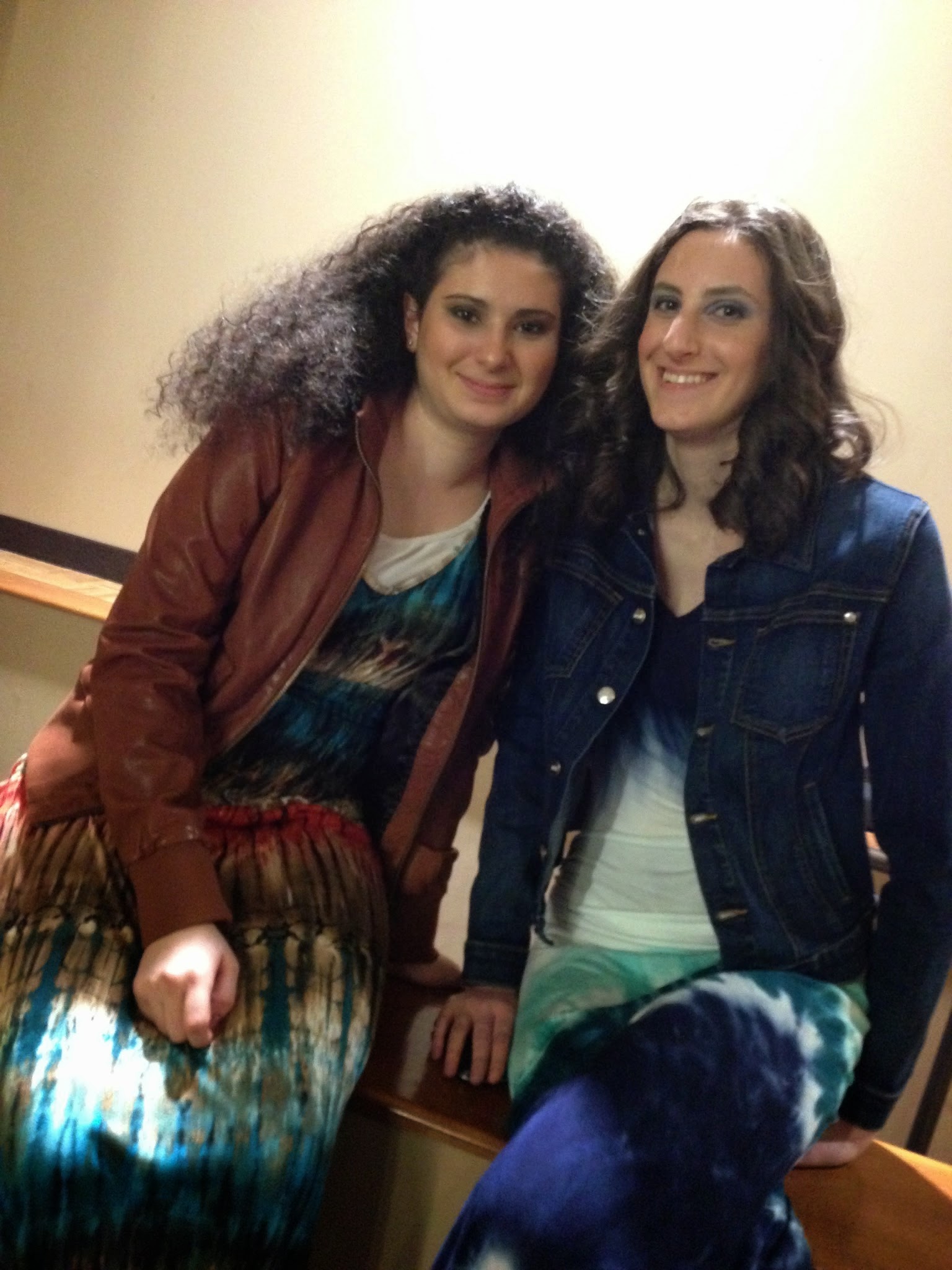Reflection is one of the key components of
PBL and for good reason. One of the things PBL affords students is the chance to understand why they're learning what they're learning. Students shouldn't be sitting in class wondering how their course work relates to them or their world. Reflection gives students a way to contemplate the relevance and importance of their learning, and it also lets teachers know that the students are grasping the material in a deep and significant way. The feedback loop in PBL keeps students and teachers aligned in their learning goals.
Following is an example of student work that displays the kind of deep learning that can take place with PBL. The assignment -- which offered students voice and choice, another key component of PBL -- asked a class of juniors to discuss how they saw the American dream, after seeing it from a myriad of perspectives over the first semester of an American literature course. Students had read
The Things They Carried by Tim O'Brien and
The Immortal Life of Henrietta Lacks by Rebecca Skloot over the summer; during the first semester, they also read
The Scarlet Letter and
The Crucible and had become familiar with Romanticism and the Romantic hero.
PBL also makes sure that student work has authentic purpose. In this class, students chose a type of injustice in America today and investigated it in groups, sharing their findings with the class; they also had to read one article from a
New York Times series about American children living in poverty. Finally, the class planned and executed an
Acts of Kindness Day on December 26, in honor of the 26 victims of Newtown and as a way to begin addressing unfair treatment in American society.
Here is Liat's wonderful assessment of the semester. We particularly like the personal details she includes in the essay, discussing her great-grandfather's experience with the American dream:
Reflections on the Semester
Had I been asked four months ago to define the “American Dream,” I would have answered with a laugh and resorted to cliche. “To live the American Dream is to raise a family with 2.5 perfect children, and to own a large, spotless house--complete with a white picket fence and a dog (probably a Golden Retriever).” Had you asked me the same question one month ago, however, I would have hemmed and hawed and been forced to deliberate my answer--finally declaring that based on my discussions in English class, there is no concrete definition of the notion of the “American Dream.” But ask me today and you’ll find my answer is far more long-winded (five and a half pages, to be exact). To me, the American Dream was not, is not, and cannot ever be a static idea, but rather is one that is constantly changing and is reflective of our history. But however one defines the American Dream at a particular point in our nation’s timeline, the concept of “opportunity” is a central theme throughout its course.
In the early 1600’s, the Pilgrims fled Europe for the New World. In their version of the American Dream, America was not a place where individuals could practice religion as they saw fit; but rather, America was a haven from religious persecution, where the pilgrims could enjoy the liberty of starting their very own theocracy. The Dream underwent a transformation when the Bill of Rights was signed into law in 1791. It promised certain, inalienable protections to each and every resident of the U.S.A., including freedom of religion, freedom of speech, and freedom of the press. A citizen living the American Dream could voice open expression of his ideas andbe whomever he chose to be. Following the civil rights movement of the 1960’s, an essential part of the American Dream’s new identity became the new freedoms the United States offered to minorities and people of color. With the advent of feminism in the seventies, the American Dream morphed into one of equality of the sexes. A woman could now own the American Dream in the same way as a man, expecting the same freedoms and opportunities which he enjoyed.
Alongside all of these versions of the American Dream, there has existed a parallel text of the American Dream. In the late 18th century, enterprising opportunists first sought to buy huge tracts of farmland. In the 19th century, young men journeyed west in the Gold Rush. In the early 20th century, Jewish immigrants left their homes and communities to reach the “Goldene Medina.” This trend continues through today, as America has been known as the land for great personal financial growth. There is, however, a huge flaw in the American Dream that I’ve witnessed throughout this semester’s class, and that is that individual Americans often fail to live up to these evolving expectations.
In the literary works that we have read so far this year, the American Dream has proved elusive to many characters--both fictional and nonfictional. In Nathaniel Hawthorne's The Scarlet Letter, Hester, a true romantic hero, journeys to America knowing full well that she will be living in a Puritan theocracy. Despite this prior knowledge, Hester still feels trapped by the confines of her community, and seeks refuge in the forest or by the sea. As my group came to understand, through a deep analysis of the symbols of town, forest and sea, Hester cannot truly escape the “town,” which represents societal and religious ideals, into the uncontained “forest” and “sea,” both of which represent the ability to make different choices and the capacity for human growth and change. At the conclusion of the story, Hester’s daughter decides not to follow her mother back to America. I would suggest that both she and her mother have been disillusioned by the scope of the American Dream, and that the narrow freedoms it offers are still too restrictive.
Arthur Miller's The Crucible can be read on an allegorical level as the story of the failure of the American Dream. In the fifties, McCarthy began to point fingers at his political enemies, igniting a frenzy that was akin to the Salem witchcraft hunt of the 17th century. Miller himself was blacklisted and, I believe, this experience taught him that the freedoms of individual expression are tenuous and not guaranteed, despite the promises of the First Amendment.
In Tim O'Brien's book, The Things They Carried, the author relates fictional stories of soldiers during the Vietnam War. During the war, young men were forcibly drafted into the army and into a war that they did not support, believe in or even understand. I think that O’Brien is presenting a highly critical picture of the callousness of our leaders in sending these young men off to die, and is calling the government out on its failure to protect the rights of the individual.
In Rebecca Skloot’s, The Immortal Life of Henrietta Lacks, Henrietta and her family are wronged by the American scientific community on multiple levels. Henrietta’s personal freedoms were violated when the doctors failed to get informed consent on the use of her cells. Though there was no active cover-up in the successive two decades, during which the civil rights movement was taking hold, I believe that her descendants were failed by silence--by the passive acceptance of those involved that there was no need to acknowledge Henrietta’s pivotal role.
At the beginning of the semester, when we were asked to write a Declaration of Independence, I declared myself independent from “The Patriarchy that is 21st Century American Society.” I recognized a series of blatant strikes against the Dream as I wrote about male-centered language, male privilege, slut shaming, indecent media portrayal of women in the media, unequal job opportunity, and unfair wage gaps. I can only hope that I will not be disappointed in adulthood when it is my turn to transform my Dream into a reality, and that I will find the true equality of men and women that it promises.
As I sit here reflecting on this semester (or rather half reflecting and half lamenting the end of shiriyah!), I envision the possibility of success and am not convinced that all American Dream stories need to end in failure or disillusionment, though it makes for good reading and discussion. Over Thanksgiving weekend, my grandmother shared some fascinating family history with me. As it turns out, my great-grandfather, Grandpa Sam z”l, was a hobo during the Great Depression. As an 18 year-old, he was without employment for over a year. He rode the rails from coast to coast looking for day work, earning a pittance in order to keep from starving. He received occasional handouts from the Salvation Army and benefited from meals in their soup kitchens. But, years later, he managed to become an insurance salesman, marry my great-grandmother, buy a house, raise a family and send his two daughters off to college. This is the quintessential story of the American Dream! Given the opportunity, a man pulls himself up by his bootstraps, forges ahead with will and passion, and achieves success–familial, professional and financial.
Last year, TheNew York Times published a series of articles called The Invisible Child, detailing the life of Dasani, a homeless girl living in New York City. At the conclusion of the series, Dasani and her family are transferred out of the decaying, moldy, unsafe shelter they had been living in, into their own three-bedroom apartment with a kitchen. They settle in and they are ecstatic to finally have their own place; in their minds, they are living the American Dream. Their transition to a new home is due entirely to the work of the department of social services. I wonder if this one small act will change the course of Dasani’s life for the better (and I look forward to reading any follow-up articles!)
Concluding the semester with “Twenty-Six Acts of Kindness Day” was incredibly meaningful for me. On that first Wednesday in December, as I sat down to listen to Ms. Schroff [Laura Schroff, author of An Invisible Thread, came to speak to the students and returned to share our Acts of Kindness day with Frisch], I knew that this would be a very different kind of program than I had experienced in the past. The manner in which Ms. Schroff spoke was so genuine that I became convinced that the notion that “one small act of kindness can change a life” had some legitimacy to it. In the week after, as we prepared for “Twenty-Six Acts of Kindness Day,” I became more and more enamored by the idea and enjoyed thinking up acts that seemed like doable and realistic goals for students. I felt a surge of pride as I stood at the sign-up table and saw the numbers for myself: 193 people in the Frisch community participated, and we accomplished a total of 233 acts of kindness! Sure, we had sponsored chessed [acts of kindness[ days before, but juxtaposed to Ms. Schroff’s and Maurice’s talks, and with the backdrop of honoring the 26 victims of the Newton Massacre, it felt more meaningful.
Grandpa Sam, Maurice, and Dasani serve as proof that the American Dream can be realized, though so many great writers choose to acknowledge its failure. But perhaps we would not recognize the American Dream successes without being able to contrast them to the failures. As I wrote in my Thanksgiving piece earlier this semester, one can only understand light when it is held up against the dark. With drive and perhaps a little bit of goodwill from others, we can all take advantage of the opportunities living in America affords. Light can emerge from the darkness.







































































+copy.jpg)
















































